@Brian Boyle, if you provide me with a link to the dropbox I can upload my field and we'll see whether you can mosaick it with yours seamlessly. Or vice-versa, I don't mind.
|
You cannot like this item. Reason: "ANONYMOUS".
You cannot remove your like from this item.
Editing a post is only allowed within 24 hours after creating it.
You cannot Like this post because the topic is closed.
Copy the URL below to share a direct link to this post.
This post cannot be edited using the classic forums editor.
To edit this post, please enable the "New forums experience" in your settings.
@Michael Ring flat out at the moment... will try to look later tonight. IN the meantime can anyone else help Michael check his data? CS Brian
|
You cannot like this item. Reason: "ANONYMOUS".
You cannot remove your like from this item.
Editing a post is only allowed within 24 hours after creating it.
You cannot Like this post because the topic is closed.
Copy the URL below to share a direct link to this post.
This post cannot be edited using the classic forums editor.
To edit this post, please enable the "New forums experience" in your settings.
Link for the data on DropBox is here https://www.dropbox.com/scl/fo/gib8saec1dq7tt9gju66z/h?dl=0&rlkey=64tv8n9bnbk37c0g5poownt24I dont kow if I need to know everyone's emails to give permission. Remember I am a bit of a neophyte with DropBox and most things about moden computers. Struggling a little to do observing, reduction and coordination. @andrea tasselli offer to look at the stitching is gratefully appreciated!
|
You cannot like this item. Reason: "ANONYMOUS".
You cannot remove your like from this item.
Editing a post is only allowed within 24 hours after creating it.
You cannot Like this post because the topic is closed.
Copy the URL below to share a direct link to this post.
This post cannot be edited using the classic forums editor.
To edit this post, please enable the "New forums experience" in your settings.
Michael Ring:
@Brian Boyle have you seen my mail on calculating SNR? It was a little big in size because I included screenshots, I am still a bit lost with the full process for the calculations and have also taken data one field per night over the last nights.
I would like to see if I have taken enough or if I have to re-visit some of the fields for more data.
I envy you for your Bortle2 skies, for me @Bortle4 it takes a bit longer to build up SNR.
Michael Hi Michael Thanks for the message and the data. It certainly looks like your data is consistent with the 4hours in Bortle 4 we estimated. Keep up the good work! CS Brian
|
You cannot like this item. Reason: "ANONYMOUS".
You cannot remove your like from this item.
Editing a post is only allowed within 24 hours after creating it.
You cannot Like this post because the topic is closed.
Copy the URL below to share a direct link to this post.
This post cannot be edited using the classic forums editor.
To edit this post, please enable the "New forums experience" in your settings.
Brian Boyle:
If @James Tickner is able to do the polar fields and @andrea tasselli cover some of the -65 strip, then we should have good coverage from the Milky Way down to the pole - with the IFN regions of Chameleon and Apus covered. This should provide one of the most stringest tests of our mosaicing - milky way gradient, faint IFN and polar geometry. If we can do this, we can do anything! Still waiting on my UV/IR filter to come in so I can mod my camera. Oh and some good weather of course! On the plus side, an afternoon with some steel angle, shims and a set square have paid off. I managed to grab one sub during a 5 min break in the clouds and my camera rotation is now aligned east-west to within 0.3 degrees.
|
You cannot like this item. Reason: "ANONYMOUS".
You cannot remove your like from this item.
Editing a post is only allowed within 24 hours after creating it.
You cannot Like this post because the topic is closed.
Copy the URL below to share a direct link to this post.
This post cannot be edited using the classic forums editor.
To edit this post, please enable the "New forums experience" in your settings.
@Michael Ring is the image in the Dropbox root yours for F666 (hum, the number of the Devil...)? If so you have an issue with your flat-field. I can remove the gradient but it would be better to consolidate on the right technique here. @Brian Boyle am I correct in thinking that all the fields have BTX applied? If so I'd like to have them in unprocessed state as it would make for better merging between different sources.
|
You cannot like this item. Reason: "ANONYMOUS".
You cannot remove your like from this item.
Editing a post is only allowed within 24 hours after creating it.
You cannot Like this post because the topic is closed.
Copy the URL below to share a direct link to this post.
This post cannot be edited using the classic forums editor.
To edit this post, please enable the "New forums experience" in your settings.
@andrea tasselli yes BXT applied. Can you use that existing data just to do a quick check of the stitching? My computer is tied up a little at the moment processing data from last night - so it might take me a few hours to upload the “raw” WBPP output. Nevertheless, I think we should try to stitch both with and without BTX. Can you try with the current data to see how it looks. (Again I could also do this, but my computer is busy!) Based on my experience - admittedly more as a professional astronomer than as an astrophotographer - deconvolution is an integral part of the linear processing of astronomy data processing, just like photometric calibration. Having reviewed the 10 fields I have observed and processed to date I am further convinced that do need to use BXT (or some from of deconvolution) to assist with image quality. Whether this leads to aliasing problems (referred to earlier in this thread) is something we will need to investigate. I have put together some pretty large mosaics (several hundred square degrees) using WBPP autocropped frames with BXT and SPCC applied and not noticed any issues. Indeed, its when I dont use WBPP and BXT that I run into problems. One thing I have noticed is that, where previously I would have used ABE/DBE , not applying this (your suggestion I believe) has led to much more accurate data. The stellar gradient off the place is much better represented, and although it might give issues in visualising IFN alongside the bright Milky Way, it is certainly the way to go. Thanks Brian
|
You cannot like this item. Reason: "ANONYMOUS".
You cannot remove your like from this item.
Editing a post is only allowed within 24 hours after creating it.
You cannot Like this post because the topic is closed.
Copy the URL below to share a direct link to this post.
This post cannot be edited using the classic forums editor.
To edit this post, please enable the "New forums experience" in your settings.
Yeah, by pure accident I took this Field666, it is currently in a good position when I shoot from my balcony at home that I use when we only have short nights and it is not efficient to drive to my dark site.
There is only one other field that I took on full purpose, it included the Ring Nebula, there I really could not resist.
I have an issue with overcorrecting flats if this is what you mean, there is also an issue with my top right corner which is now good enough so that I can fix it with BlurXterminator but in the end I will have to come up with something 3d printed that allows me to adjust my tilt.
If you have tips for me on to do better on the overcorrecting flats then I will be grateful for any idea, so far I found that adding a constant to the flats can help (not very much success in my first tests), then I read that some guy had success with exactly my lens and camera combination with flats that were done with a mean of 40000, in the same thread I also read that those values should not matter, I will try anyway when I am back home…. and then I read that some guy that also uses a baader filter had flats issues that were not there with another filter, at home I have another Antlia V-Pro Filter and an Astronomik L-2 filter than I can try, will be back tomorrow evening….
Michael
|
You cannot like this item. Reason: "ANONYMOUS".
You cannot remove your like from this item.
Editing a post is only allowed within 24 hours after creating it.
You cannot Like this post because the topic is closed.
Copy the URL below to share a direct link to this post.
This post cannot be edited using the classic forums editor.
To edit this post, please enable the "New forums experience" in your settings.
Now uploading the WBPP output form the first 9 fields to the Dropbox. One thing I have noticed is a field rotation in my data - up to 8 deg. I think my panes are large enough to tolerate this, but I need to track this down. I suspect my camera lens is not securely enough fastened to my Losmandy plate. Another lesson is not to try to do too many things at once. Grateful if someone could check it is not too awful... from a quick PTGui merge it doesn't look too bad, but I haven't included the data from last night yet. 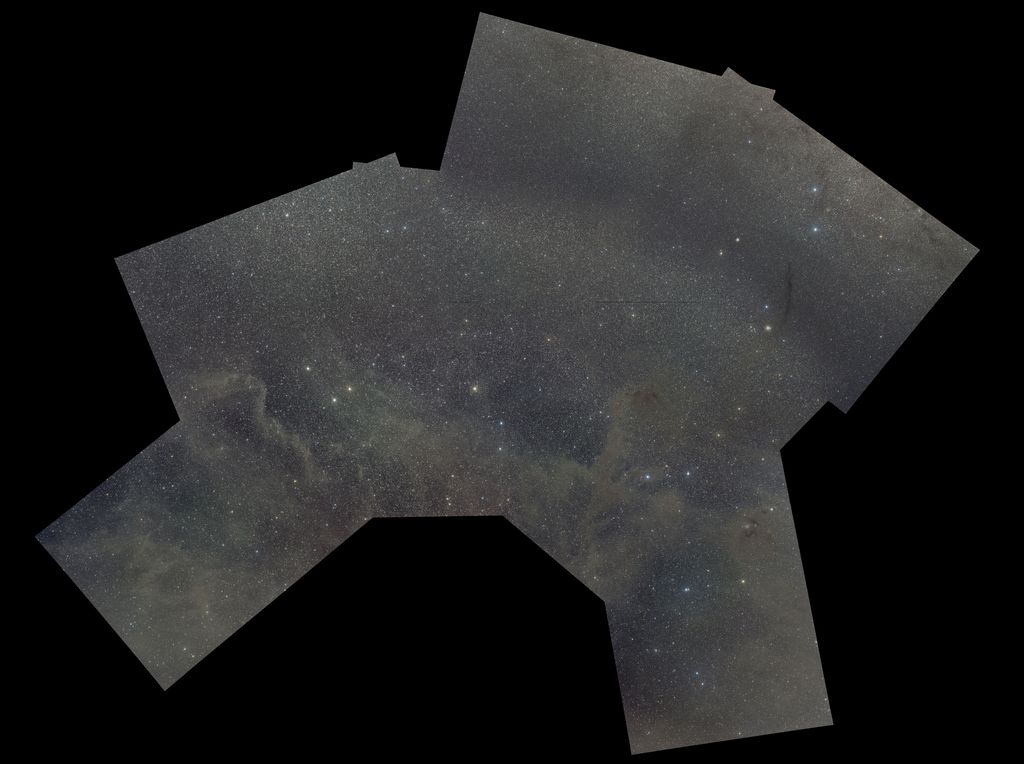 |
You cannot like this item. Reason: "ANONYMOUS".
You cannot remove your like from this item.
Editing a post is only allowed within 24 hours after creating it.
You cannot Like this post because the topic is closed.
Copy the URL below to share a direct link to this post.
This post cannot be edited using the classic forums editor.
To edit this post, please enable the "New forums experience" in your settings.
Michael Ring:
Yeah, by pure accident I took this Field666, it is currently in a good position when I shoot from my balcony at home that I use when we only have short nights and it is not efficient to drive to my dark site.
There is only one other field that I took on full purpose, it included the Ring Nebula, there I really could not resist.
I have an issue with overcorrecting flats if this is what you mean, there is also an issue with my top right corner which is now good enough so that I can fix it with BlurXterminator but in the end I will have to come up with something 3d printed that allows me to adjust my tilt.
If you have tips for me on to do better on the overcorrecting flats then I will be grateful for any idea, so far I found that adding a constant to the flats can help (not very much success in my first tests), then I read that some guy had success with exactly my lens and camera combination with flats that were done with a mean of 40000, in the same thread I also read that those values should not matter, I will try anyway when I am back home.... and then I read that some guy that also uses a baader filter had flats issues that were not there with another filter, at home I have another Antlia V-Pro Filter and an Astronomik L-2 filter than I can try, will be back tomorrow evening....
Michael I have removed the residual but it was pretty strong which indicates significant issues with the overall methodology. So the question is: how do you you take your flats? 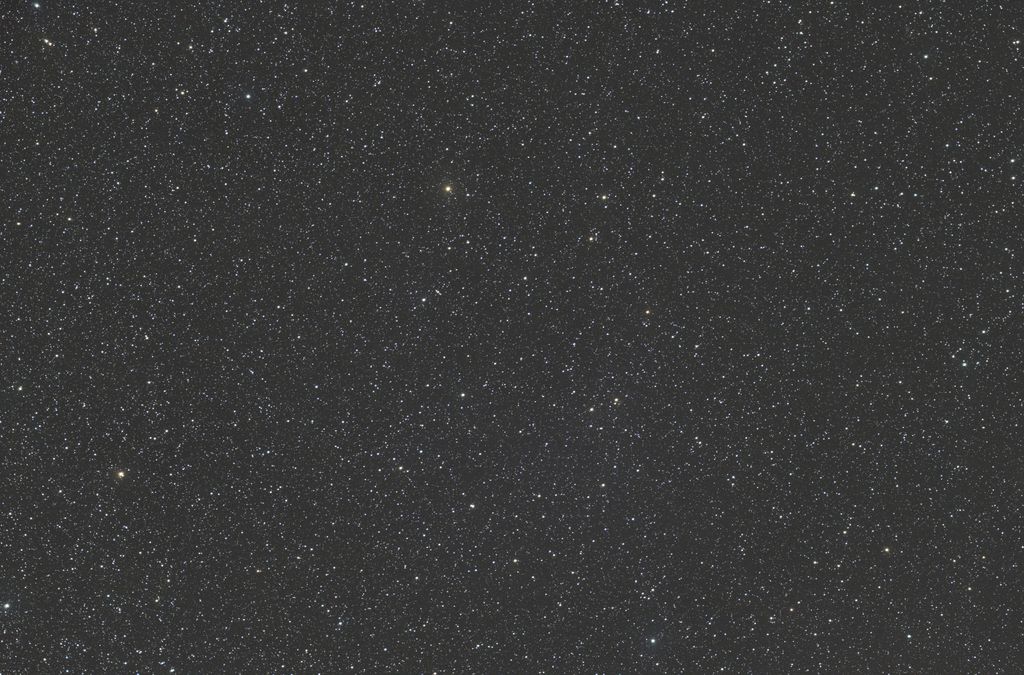 Incidentally, are you using some kind of filter? The stars colors indicate a blue over-correction.
|
You cannot like this item. Reason: "ANONYMOUS".
You cannot remove your like from this item.
Editing a post is only allowed within 24 hours after creating it.
You cannot Like this post because the topic is closed.
Copy the URL below to share a direct link to this post.
This post cannot be edited using the classic forums editor.
To edit this post, please enable the "New forums experience" in your settings.
I do the flats as I do them for all my telescopes, I have a LED panel, put it at minimum power and add two sheets of paper to get brightness down a bit more.
Aperture,Focus Point, Gain and Offset are the same values that I use when collecting data. I still have to use short exposures (0.24s) to get the histogram peak in the middle. The Filter I use is a Baader UV/IR cut filter
I will try sky flats today, read somewhere that a guy had better success with those, but honestly I am not expecting much from that.
Michael
|
You cannot like this item. Reason: "ANONYMOUS".
You cannot remove your like from this item.
Editing a post is only allowed within 24 hours after creating it.
You cannot Like this post because the topic is closed.
Copy the URL below to share a direct link to this post.
This post cannot be edited using the classic forums editor.
To edit this post, please enable the "New forums experience" in your settings.
Here is a PTGui stitched image of the 12 fields I have uploaded to DropBox. Fields with the suffix _WBPP are the linear output from the observing/processing process specified by the pipeline. 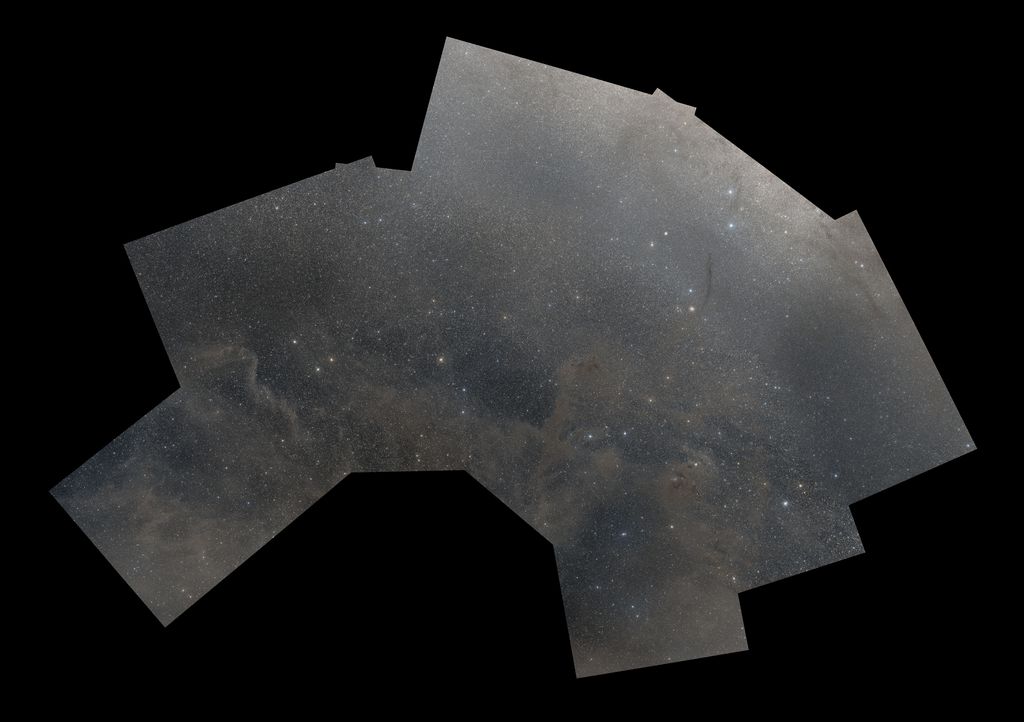 The seams are not bad, although I suspect PI's MosaicBy Coordinates and PhotometricMosaic would do a much better job. But much slower job. Anyway the data is all there for someone who wants to try. Will continue to fill out this area at later RA and leave the pole for @James Tickner |
You cannot like this item. Reason: "ANONYMOUS".
You cannot remove your like from this item.
Editing a post is only allowed within 24 hours after creating it.
You cannot Like this post because the topic is closed.
Copy the URL below to share a direct link to this post.
This post cannot be edited using the classic forums editor.
To edit this post, please enable the "New forums experience" in your settings.
I have been offline quite a lot during the last days, so I tried to catch up with some of the stuff that happened in the meantime.
These really are some great images so far, huge respect for everyone who is contributing to this!
BXT could be a solution to the problems with very non-uniform star shapes across different lenses we discussed earlier. Maybe this can solve the issue with this.
CS Gerrit
|
You cannot like this item. Reason: "ANONYMOUS".
You cannot remove your like from this item.
Editing a post is only allowed within 24 hours after creating it.
You cannot Like this post because the topic is closed.
Copy the URL below to share a direct link to this post.
This post cannot be edited using the classic forums editor.
To edit this post, please enable the "New forums experience" in your settings.
Michael Ring:
I do the flats as I do them for all my telescopes, I have a LED panel, put it at minimum power and add two sheets of paper to get brightness down a bit more.
Aperture,Focus Point, Gain and Offset are the same values that I use when collecting data. I still have to use short exposures (0.24s) to get the histogram peak in the middle. The Filter I use is a Baader UV/IR cut filter
I will try sky flats today, read somewhere that a guy had better success with those, but honestly I am not expecting much from that.
Michael I've found that is best to keep the "peak" somewhat to the left of the middle. For short lens such as the Samyang sky flats (dusk flats) might require either diffusing screens and/or tailored techniques in chosing the "right" monet and the "right" location to shoot at because otherwise you'll incorporating the sky brightness distribution, which isn't entirely flat at these FOVs. Another thing is how you post-process the flat frames. Do you take dark-flats or do you take bias and darks, or just bias? It could all be residual LP effects but in that case you're better off with LP filter rather than just UV/IR cut. And avoid Baader's.
|
You cannot like this item. Reason: "ANONYMOUS".
You cannot remove your like from this item.
Editing a post is only allowed within 24 hours after creating it.
You cannot Like this post because the topic is closed.
Copy the URL below to share a direct link to this post.
This post cannot be edited using the classic forums editor.
To edit this post, please enable the "New forums experience" in your settings.
Yes, it helps a lot. When I set sharpening to 0 and increase Star Halos to 0.1 - 0.2 then things start looking okayish… Be carefull with sharpening as many stars will get reduced to very few pixels and this then does not look good anymore. Increasing Star Halos can also make stars look more colorfull.
|
You cannot like this item. Reason: "ANONYMOUS".
You cannot remove your like from this item.
Editing a post is only allowed within 24 hours after creating it.
You cannot Like this post because the topic is closed.
Copy the URL below to share a direct link to this post.
This post cannot be edited using the classic forums editor.
To edit this post, please enable the "New forums experience" in your settings.
BXT could be a solution to the problems with very non-uniform star shapes across different lenses we discussed earlier. Maybe this can solve the issue with this. I very much don't think so. As far as I'm concerned mosaic material shall be kept in linear, unadulterated state till the mosaic is complete.
|
You cannot like this item. Reason: "ANONYMOUS".
You cannot remove your like from this item.
Editing a post is only allowed within 24 hours after creating it.
You cannot Like this post because the topic is closed.
Copy the URL below to share a direct link to this post.
This post cannot be edited using the classic forums editor.
To edit this post, please enable the "New forums experience" in your settings.
@andrea tasselli : Good hints, thanks! I took Bias + flat frames. But perhaps I have to re-introduce the dark flats as I am usually using IMX571 chips and those do in theory not need darks/darkflats anymore (Although I only not do them for <2s exposures) The ASI071 has a much older sensor so perhaps it needs the darkflats. And yes, I will avoid Baader next night and will report back..... Michael
|
You cannot like this item. Reason: "ANONYMOUS".
You cannot remove your like from this item.
Editing a post is only allowed within 24 hours after creating it.
You cannot Like this post because the topic is closed.
Copy the URL below to share a direct link to this post.
This post cannot be edited using the classic forums editor.
To edit this post, please enable the "New forums experience" in your settings.
@andrea tasselli Yes, that is often the best way to do it. But earlier, we raised the point of varying star shapes due to different lenses and lens issues. Since this will vary over the field, it will be difficult to fix that using conventional convolution. BXT is able to adjust the parameters for different parts of a single image, so it can compensate much better for these artifacts in a single image. After stitching, this will be problematic, because the different files BXT processes will inevitably cover more than one single panel. If, and that is a very high demand, we do all the processing that is needed on the individual frames prior to BXT, then this approach could work. Of course, color calibration and other star sensitive processes are harder or impossible to do after BXT. So this may need some complex processing to make it work. CS Gerrit
|
You cannot like this item. Reason: "ANONYMOUS".
You cannot remove your like from this item.
Editing a post is only allowed within 24 hours after creating it.
You cannot Like this post because the topic is closed.
Copy the URL below to share a direct link to this post.
This post cannot be edited using the classic forums editor.
To edit this post, please enable the "New forums experience" in your settings.
… and I tent to agree with andrea on when to use bxt, the mosaicing step should have as much untouched pixels to work with as possible so that artefacts can 'blur out'.
|
You cannot like this item. Reason: "ANONYMOUS".
You cannot remove your like from this item.
Editing a post is only allowed within 24 hours after creating it.
You cannot Like this post because the topic is closed.
Copy the URL below to share a direct link to this post.
This post cannot be edited using the classic forums editor.
To edit this post, please enable the "New forums experience" in your settings.
The reason for *NOT* applying BXT as a standard pre-processing tool (before commiting the tile to the mosaic) is that, firstly, you cannot be sure the the effect is the same (assuming everyone is sticking to a given prescription and all use BXT) on all sides being feathered and, secondly, because it would only improve very mild field aberrations and distort spectral profile so it isn't a real cure for all ills (wiz., @Brian Boyle frames). The cure for these kind of aberration (signally, coma and LCA) is, am afraid, stepping down the lens or cropping the offending part out, if needs be. Also do remember that in most instances we'll have to resize sown our pixel scale to match the required 10"/px and that is likely best done during the stitching process, so the effective aberrations will be muted down somewhat. The big elephant in the room is still to be spelled out: even if we succeed in the enterprise (and given that as far as I am aware there are only four persons actually capturing tiles and one is doing ~90% of the work?) how on Earth are we going to stretch and process a multi-GPx image?
|
You cannot like this item. Reason: "ANONYMOUS".
You cannot remove your like from this item.
Editing a post is only allowed within 24 hours after creating it.
You cannot Like this post because the topic is closed.
Copy the URL below to share a direct link to this post.
This post cannot be edited using the classic forums editor.
To edit this post, please enable the "New forums experience" in your settings.
andrea tasselli:
The reason for *NOT* applying BXT as a standard pre-processing tool (before commiting the tile to the mosaic) is that, firstly, you cannot be sure the the effect is the same (assuming everyone is sticking to a given prescription and all use BXT) on all sides being feathered and, secondly, because it would only improve very mild field aberrations and distort spectral profile so it isn't a real cure for all ills (wiz., @Brian Boyle frames). The cure for these kind of aberration (signally, coma and LCA) is, am afraid, stepping down the lens or cropping the offending part out, if needs be. Also do remember that in most instances we'll have to resize sown our pixel scale to match the required 10"/px and that is likely best done during the stitching process, so the effective aberrations will be muted down somewhat.
The big elephant in the room is still to be spelled out: even if we succeed in the enterprise (and given that as far as I am aware there are only four persons actually capturing tiles and one is doing ~90% of the work?) how on Earth are we going to stretch and process a multi-GPx image OK - now you have only three. Good luck, guys. Brian
|
You cannot like this item. Reason: "ANONYMOUS".
You cannot remove your like from this item.
Editing a post is only allowed within 24 hours after creating it.
You cannot Like this post because the topic is closed.
Copy the URL below to share a direct link to this post.
This post cannot be edited using the classic forums editor.
To edit this post, please enable the "New forums experience" in your settings.
Brian Boyle:
re you saying that you don't think my data is any good? Happy to withdraw the data.. Don't jump to conclusions; your data shows that BXT cannot cure significant field aberrations. In fact they can be made look worse. Apologies for any misunderstanding.
|
You cannot like this item. Reason: "ANONYMOUS".
You cannot remove your like from this item.
Editing a post is only allowed within 24 hours after creating it.
You cannot Like this post because the topic is closed.
Copy the URL below to share a direct link to this post.
This post cannot be edited using the classic forums editor.
To edit this post, please enable the "New forums experience" in your settings.
andrea tasselli:
Brian Boyle:
re you saying that you don't think my data is any good? Happy to withdraw the data..
Don't jump to conclusions; your data shows that BXT cannot cure significant field aberrations. In fact they can be made look worse. Apologies for any misunderstanding. No misuderstanding at all. Good luck.
|
You cannot like this item. Reason: "ANONYMOUS".
You cannot remove your like from this item.
Editing a post is only allowed within 24 hours after creating it.
You cannot Like this post because the topic is closed.
Copy the URL below to share a direct link to this post.
This post cannot be edited using the classic forums editor.
To edit this post, please enable the "New forums experience" in your settings.
I think @andrea tasselli was only pointing out the problems that come with aberration and lens distortions that are present in the images during the stitching process. There is nothing wrong with this statement, just as there is nothing wrong with the presence of these artifacts. No optic is perfect, every optic has some problems. There is no judging in this statement, this is a fact. That does also not mean that the data are bad or less good. It is just something we will have to deal with, just as every normal astrophotographer has to deal with this issue. And we have yet to figure out how to do that. I would find it a pity if this whole projects was blown up by discussions about the quality of the optics involved. We just have to discuss this issue. CS Gerrit
|
You cannot like this item. Reason: "ANONYMOUS".
You cannot remove your like from this item.
Editing a post is only allowed within 24 hours after creating it.
You cannot Like this post because the topic is closed.
Copy the URL below to share a direct link to this post.
This post cannot be edited using the classic forums editor.
To edit this post, please enable the "New forums experience" in your settings.
Happy to say that I have my flats under control now. I did a full set of Bias, Darkflats and Flats and this combination did the trick, no need for Skyflats or a non-Baader filter. For the area below (Field 892 and friends) I am missing 2 more fields to create a 6 field pano. Frame 666 is really the frame of the devil, I will likely need to reshoot it, there is still some overcorrection, maybe because I did it at F2.4 instead of F2.8. Good weather very likely ends tonight for me, so more to come on next cycle... @Brian Boyle: I will try if my last upload link you sent me still works, if not I will create a new one via PM. Michael 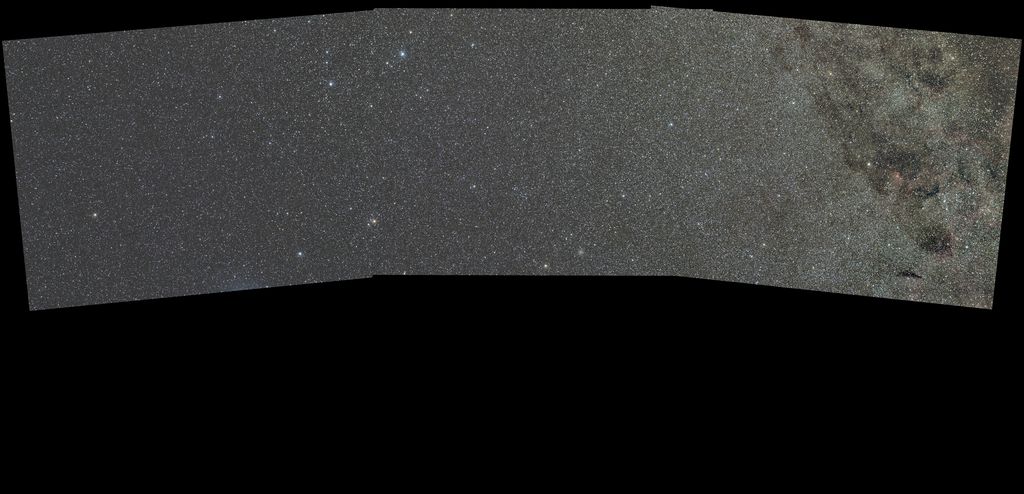 Field 667/668: 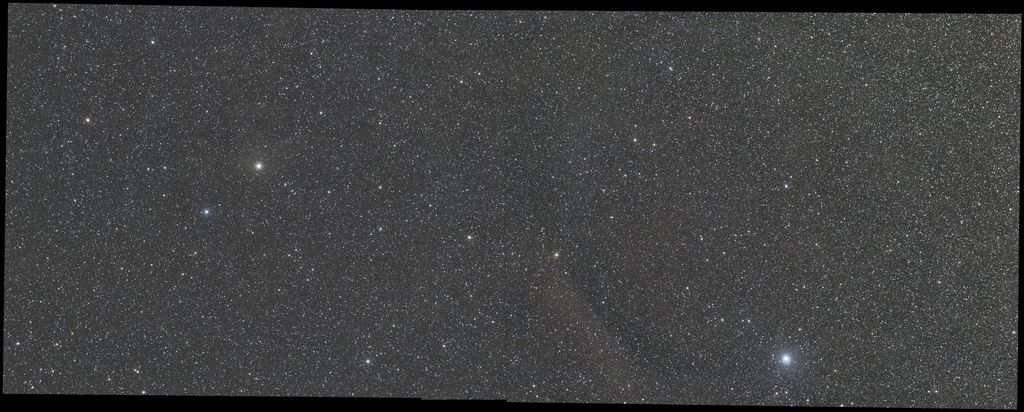 |
You cannot like this item. Reason: "ANONYMOUS".
You cannot remove your like from this item.
Editing a post is only allowed within 24 hours after creating it.
You cannot Like this post because the topic is closed.
Copy the URL below to share a direct link to this post.
This post cannot be edited using the classic forums editor.
To edit this post, please enable the "New forums experience" in your settings.







